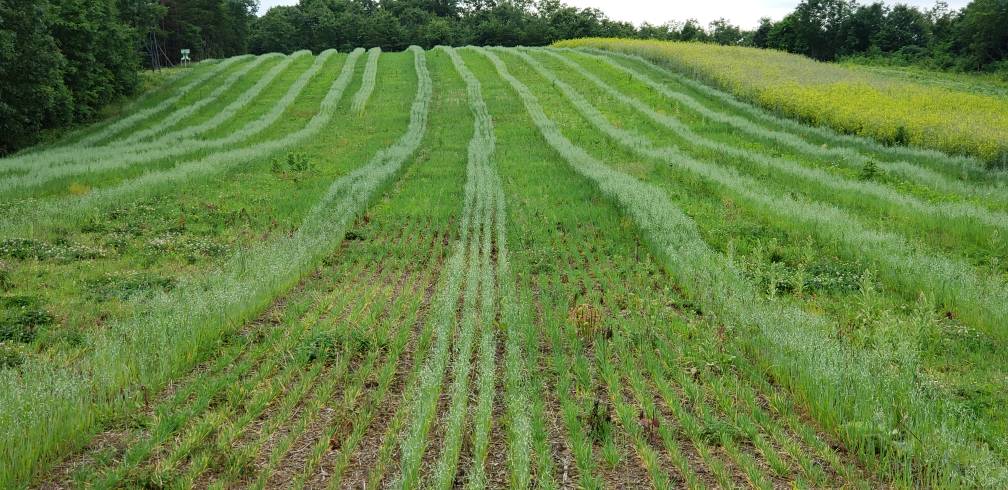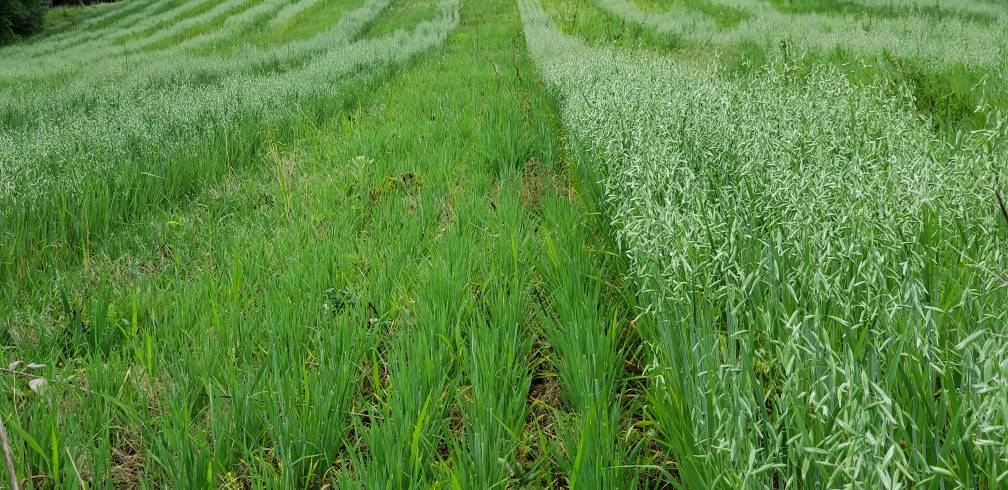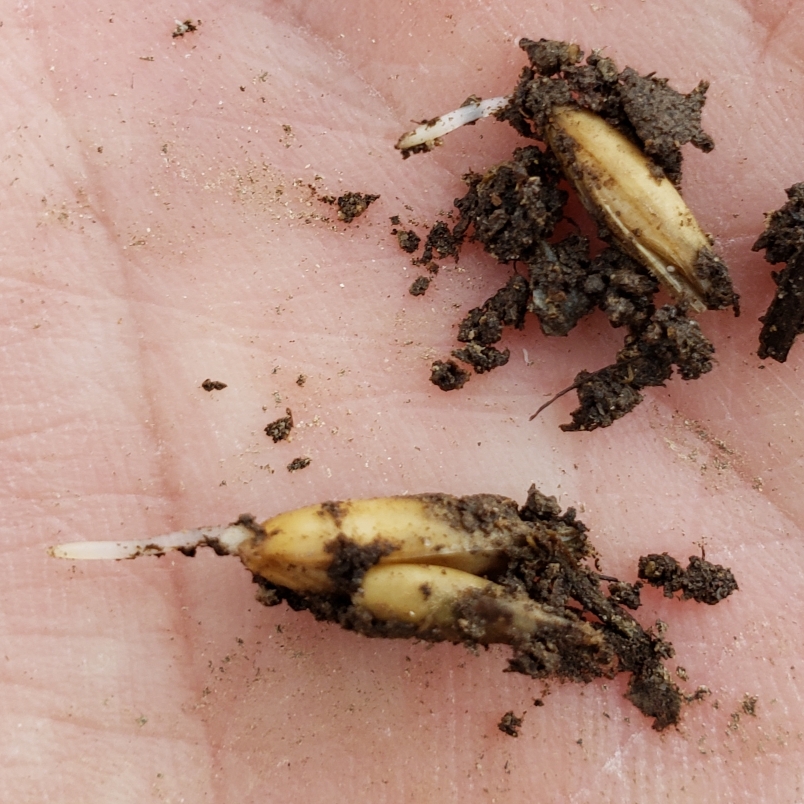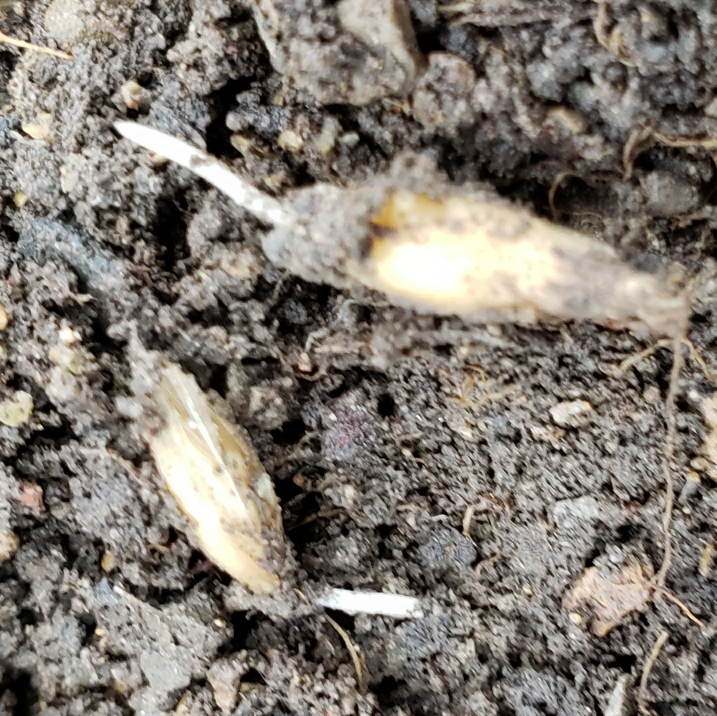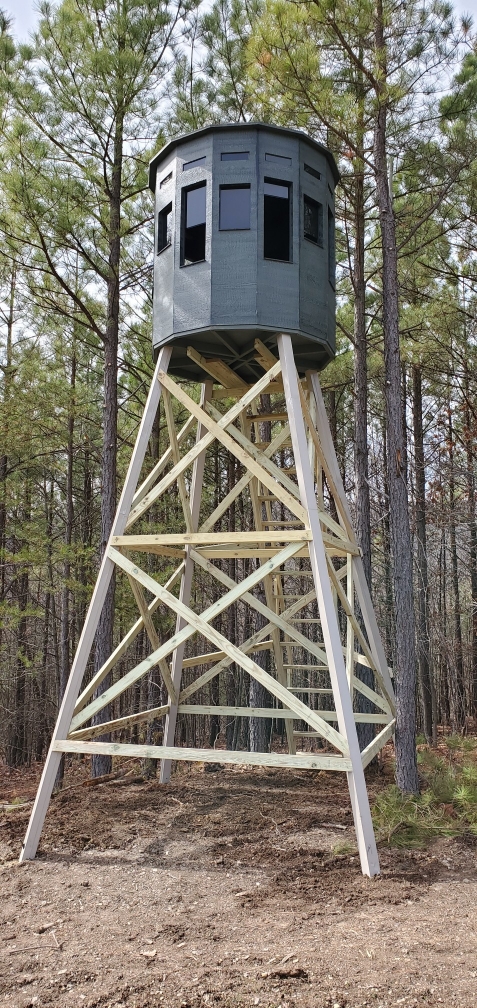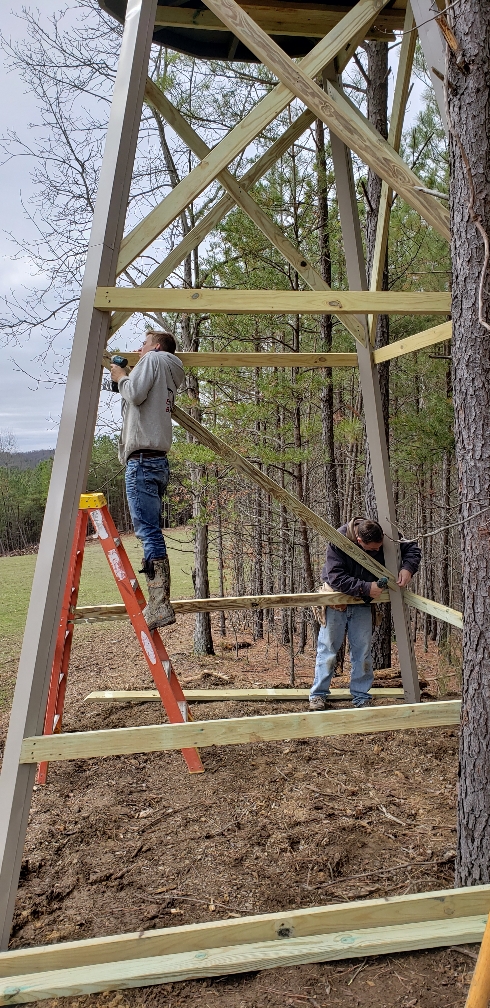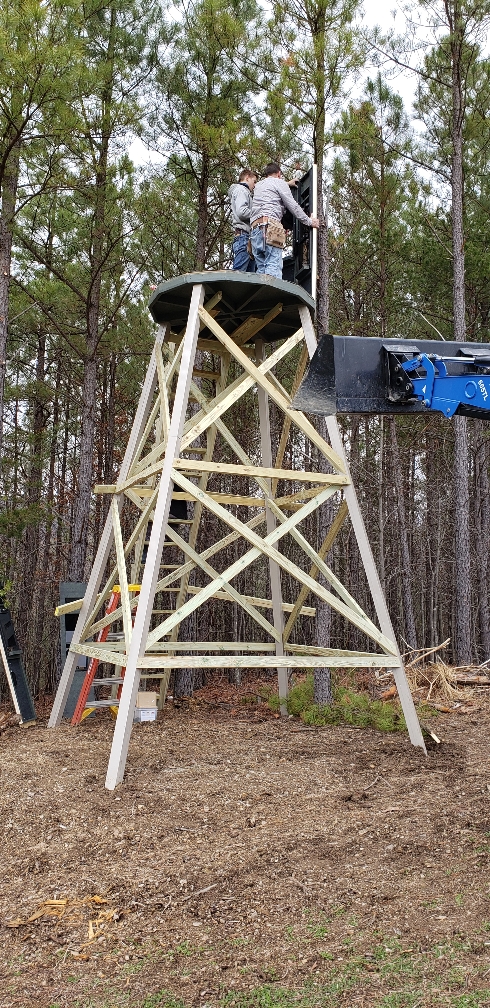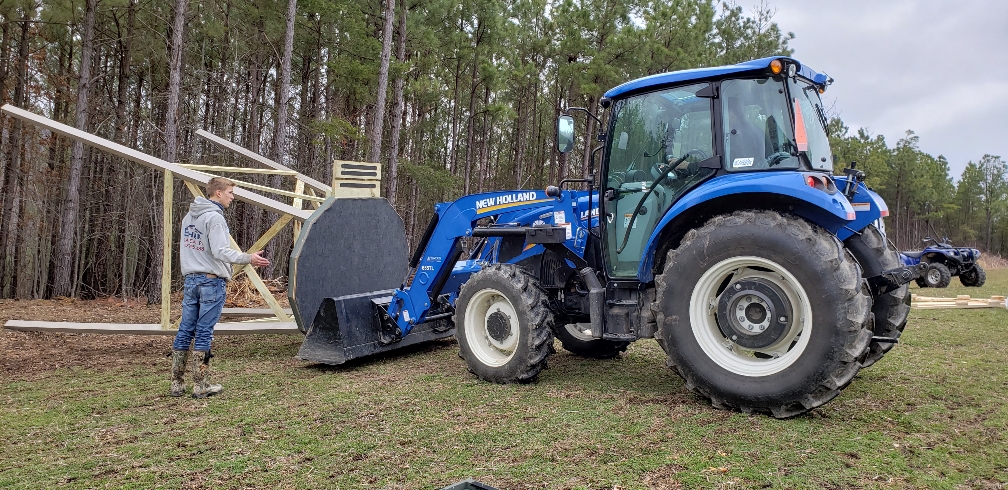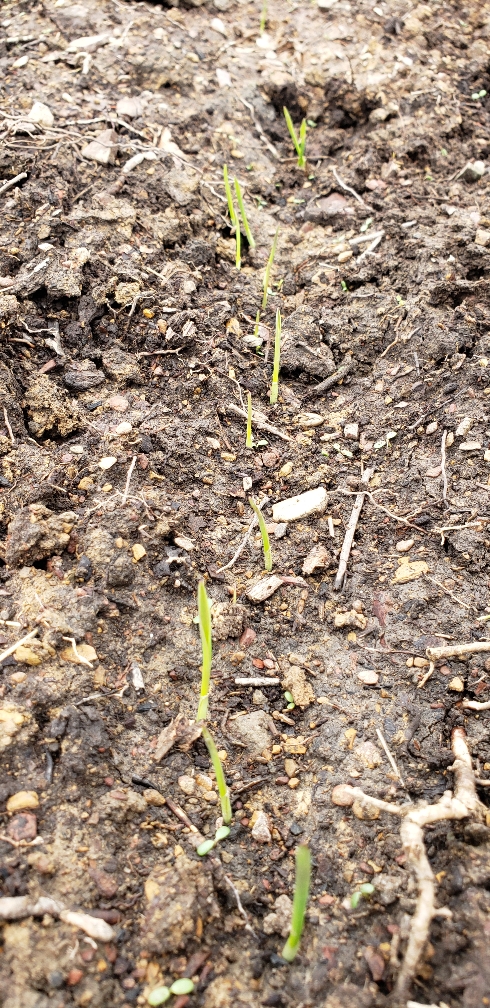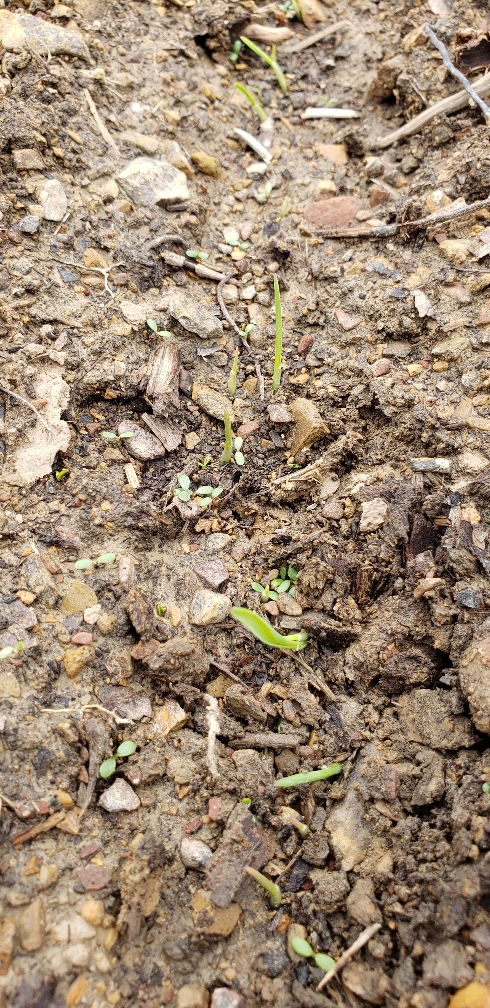If we had that many deer that they could hold a strip of barley from maturing a person could probably walk across the field on their backs. Talking seriously, I'm impressed with the amount of feeding that deer do at my place on ripe oats. March oats ripen in mid-June and our deer strip all the heads off in the next 2 months. Ripe standing oats are similar to radishes in that deer need a few years to learn to eat them, they hit them harder every year.
For us, oats are a swiss army knife go-to spring crop for many reasons; cheap seed, withstands frost for early planting, grows in poor soil, quick germination, erosion control, disease resistant, allopathic to keep grass down, early spring deer food, midsummer seed head deer food when it's too hot for some crops, soil builder, double crops well with no-till June soybeans, grows well in established clover if seeded early before the clover has ground cover, straw provides drought resistance for next crop, provides an excellent stand of straw for a brassica throw n mow in August. That's over a dozen reasons why we plant early spring oats in just about every field that we have. The only fields we don't seed in early spring oats are the fields that already have a growing crop of carryover rye and wheat from the fall before.
However, with not much growing in the fields, and residue on the ground from fall crops, a drill is an important part of this early oats planting for us. I never tried broadcasting grain seeds this early in the spring, I'm not sure how that would work.

